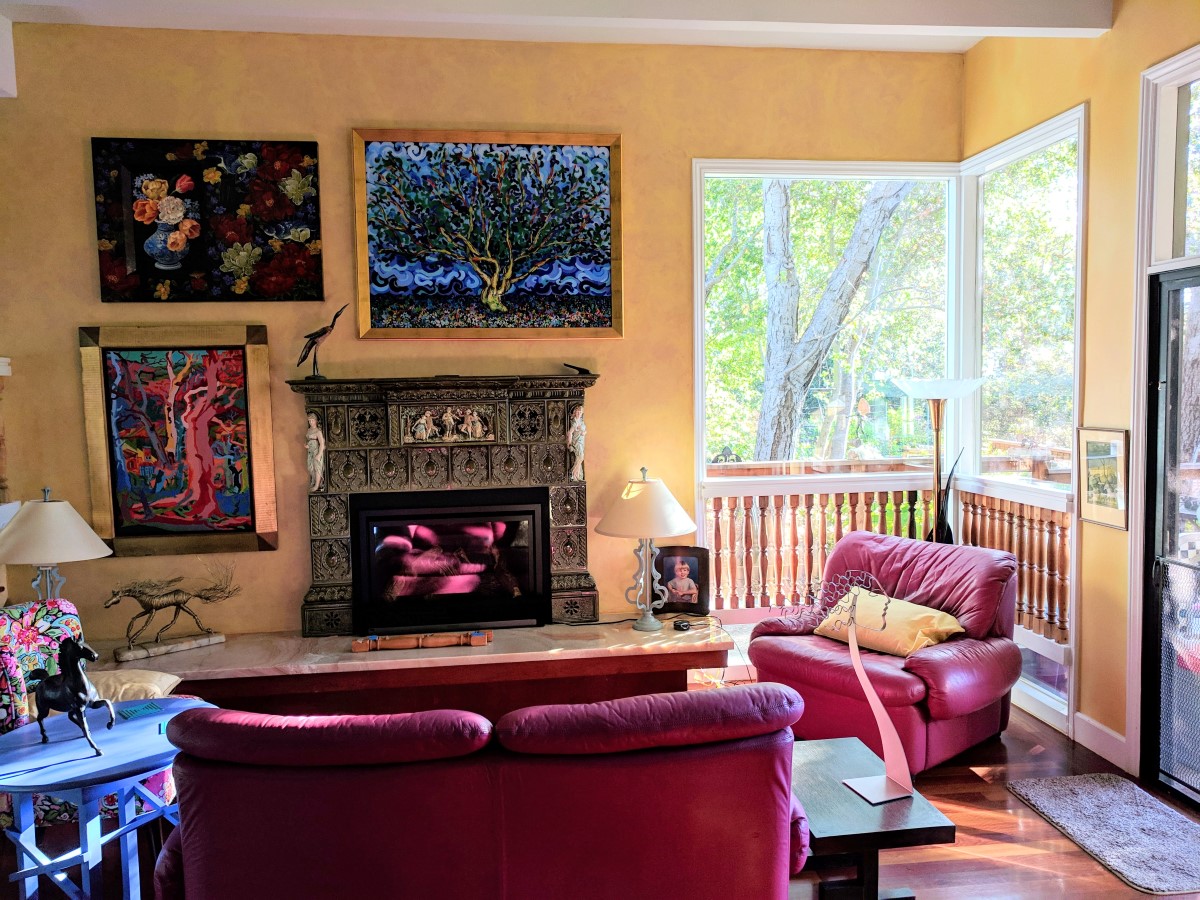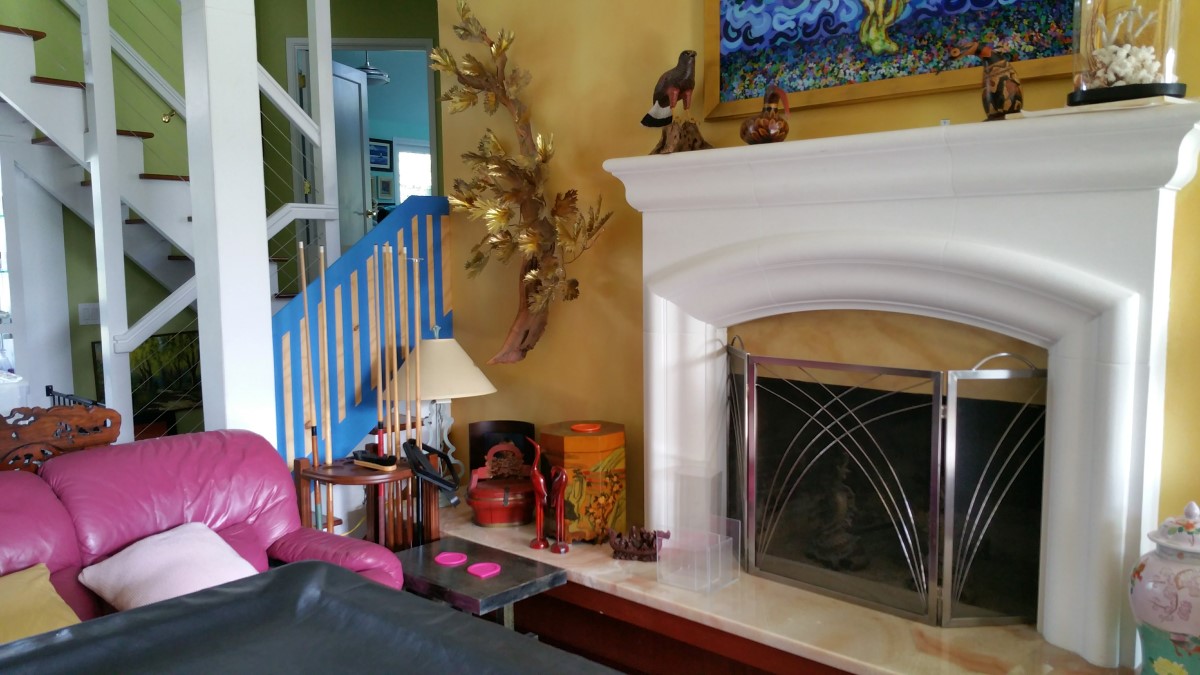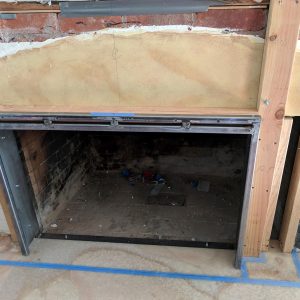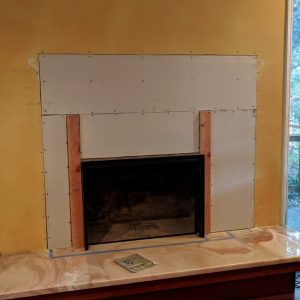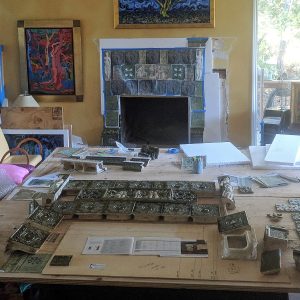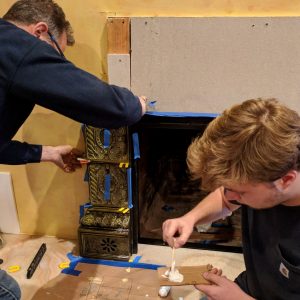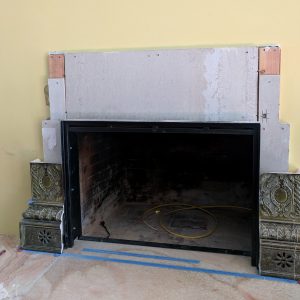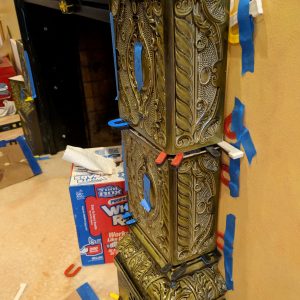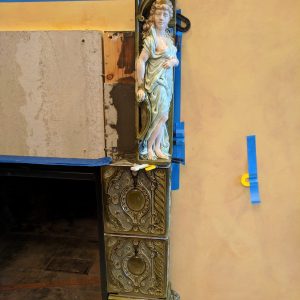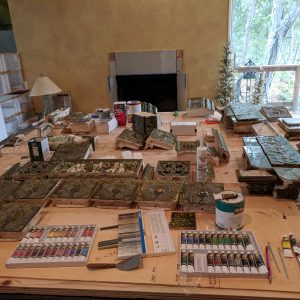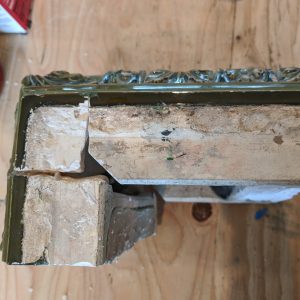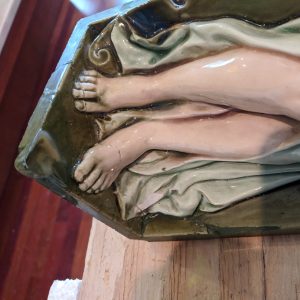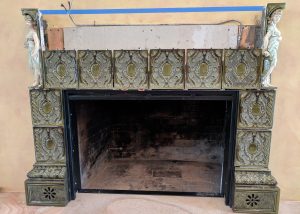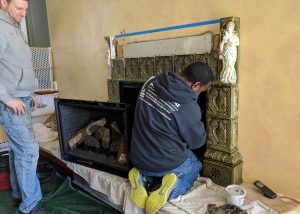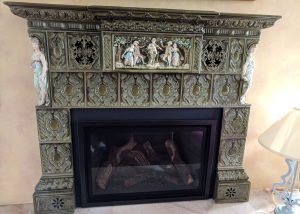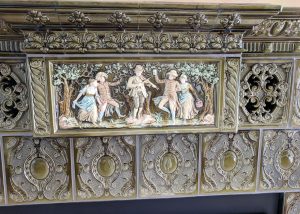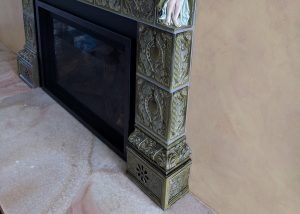After a rare Meissen Stove with was swept up from our Olde Good Things Scranton, Pa warehouse, the client was generous enough to share the transformative conversion from relic to custom mantel and fireplace surround step-by-step.
Meissen was the first porcelain manufacturer in Europe. The art nouveau ovens from the German fireclay manufactories are works of art in themselves, and this particular Meissen stove appeared in Architectural Digest. The top portion of the stove was a frieze depicting a farmer’s dance. Two female figures flank the ornate cast iron grill. Each detailed green tile bears the Meissen stamp and designer’s name on the back… a world-renowned trademark of quality and craftsmanship.
Planning and Design:
Like most projects, the client says, planning took a lot of time and adjustment. Each tile was photocopied at the original size. The clients did not want to enlarge the opening of the fireplace, and, instead, decided to make the opening smaller. After measuring the opening, dimensions were traced on a sheet of plywood. Then, the clients added in the dimensions of the gas inserts to the preliminary drawing.
The tiles were arranged on the plywood sheet to determine a satisfactory negotiation of space that would allow for an even number of tiles to be included, plus the ¼” of grout space between each one. The original tiles were shifted into a final design, while a second design board on poster backing was laid out with the photocopies. This allowed the clients to visualize how the design would interact with the room space vertically.
Building and Navigating Irregularities:
The design was attached from the base upward — tile was leveled and secured to the wall, a wood frame, and to neighbor tiles with epoxy. Wood framing was used to close the space between design and wall and for additional integrity. The insert was added around the opening after the first round of tiles to prevent damage to the tiles and to leave room for adjustment. After all, tiles were installed and colors adjusted, grout was applied. The clients tested various sealants to add gloss to the repainted areas.
Tiles were individually treated to adjust thickness, to create one tile from two for some portions of the mantel, and to repair any chips or missing pieces — plaster was used to make them fuller and fill in the gaps. Others were sawed to make smaller. Meanwhile, a steel frame was constructed to hold the rows of tiles. The clients used acrylic paint to mix and match the colors needed to cover epoxy and shallow chips.
The clients minimized the dimensions of the fireplace opening with fireproof materials and electrical and gas hookups that matched the chosen insert. They installed a smart outlet for easy control and efficiency in the mantel top.
The project was a process of constant adjustment to the irregularities and waiting for epoxy to dry at a rate of one layer per day, the client remarked. “The goal was authenticity as opposed to perfection.”
This Meissen tile customer showcase is a prime example of the incorporation of classic design and authentic craftsmanship from our reclaimed architectural finds at Olde Good Things. Visit our online selections of salvaged architectural goods and altered antiques at www.oldegoodthings.com, or drop by one of our locations.
